Uncapturable parts of Butoh
and other thoughts
Interview with Michiyasu Furutani
Edited by Nicole Bradbury
#butoh #notation #people #japan #form #time #thinking #transmit #technique #movement #coexistence #sketchbook
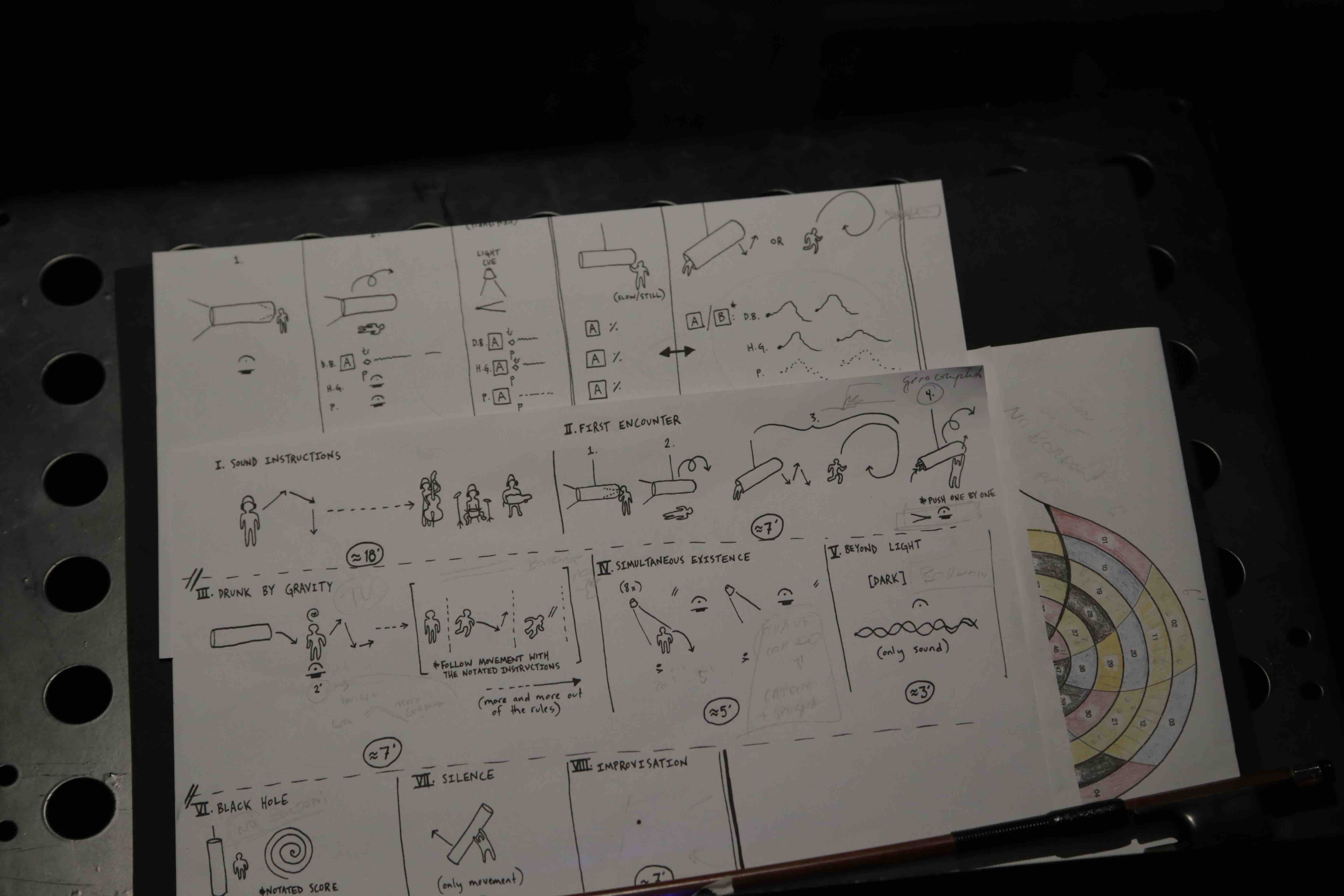
Sasha
In the past you told us about your project where you interview other Butoh dancers, how did you come up with your own interview project? Who were you in touch with? And what did you discover or come up with?
Furu
So this project didn't come up with the intention of having interviews. I studied at HZT. During the study, I researched around notations and the idea of gravity. Back then, I contacted a Butoh dancer who lives in the city in order to exchange about those ideas in the context of Butoh, because Butoh puts great emphasis on gravity. The artist I interviewed <name>, She studied Butho-fu, which is translated in English as Butoh notation. Fu means notation. I started to ask about these two points, but our subject of the conversation gradually shifted from these two points to our experience with other Butoh dancers, in Japan, and here in Berlin as well. We both left Japan around 5 or 6 years ago, and we are around the same generation. We talked about this generation's issues and the gap between west and east, Berlin and Japan, regarding
both environments. I found very intriguing issues during that conversation that influenced us, such as Confucianism, which holds a hierarchical system. Where we should, as younger people respect older people, in this way of education older people always go first and younger people always follow. And those traces which were created for a patriarchal environment, of course, influenced the art of singing and dancing as well. Since then, I have thought that it would be interesting to continue interviewing further dancers, not only as an artistic tool to generate physical movement for my future dance piece, but also as a kind of a variation to evaluate the circumstances over the current issues. So this interview project, came up with my study about gravity and notation, but turned into collecting more cultural and political gaps between Japan and here, Berlin, with Butoh artists. So with each interview I'm really curious to hear the story that each person has. I realize the power of narrative, and story and the strength of storytelling. The process could be called the power of witnessing?
...this interview project, came up with my study about gravity and notation, but turned into collecting more cultural and political gaps between Japan and here, Berlin, with Butoh artists.
Sasha
It's astonishing to hear how you had this abstract idea, and how it turned into this political dimension.
Nitsan
I'm curious if you are thinking of storytelling as a way of transmitting knowledge, and also as a practice of itself. I don't want to say that Butoh is a way of storytelling, but I think part of Butoh has a storytelling dimension.
Furu
This kind of transmission or narration of the story is related to my research with notation, as it is about how to score and how to correct the gestures or actions and the dancer's movement during stage performance. It's important for me to think about what is archived, and how archive is transmitted. As you know, some dance companies have started to film the movements by video camera, but in my perspective, the camera has issues that I found challenging (problematic). One of them is the limitation of perspective that the camera has, because the camera captures from the front, and you cannot see the backsides, only the two dimensions right in the monitor. Also, on the web, you play a video and it shows a documented project. So the time is going, and you cannot stop. It means that time that I need, I require to imagine, it's gone. I think this is also an issue of the video camera to use as a tool to document. I think for me, written media and sound recording are highly effective and efficient tools to evoke some imagination for speakers, spectators, or the people who see and listen to the archived document.
This kind of transmission or narration of the story is related to my research with notation, as it is about how to score and how to correct the gestures or actions and the dancer's movement during stage performance. It's important for me to think about what is archived, and how archive is transmitted. As you know, some dance companies have started to film the movements by video camera, but in my perspective, the camera has issues that I found challenging (problematic). One of them is the limitation of perspective that the camera has, because the camera captures from the front, and you cannot see the backsides, only the two dimensions right in the monitor. Also, on the web, you play a video and it shows a documented project. So the time is going, and you cannot stop. It means that time that I need, I require to imagine, it's gone. I think this is also an issue of the video camera to use as a tool to document. I think for me, written media and sound recording are highly effective and efficient tools to evoke some imagination for speakers, spectators, or the people who see and listen to the archived document.
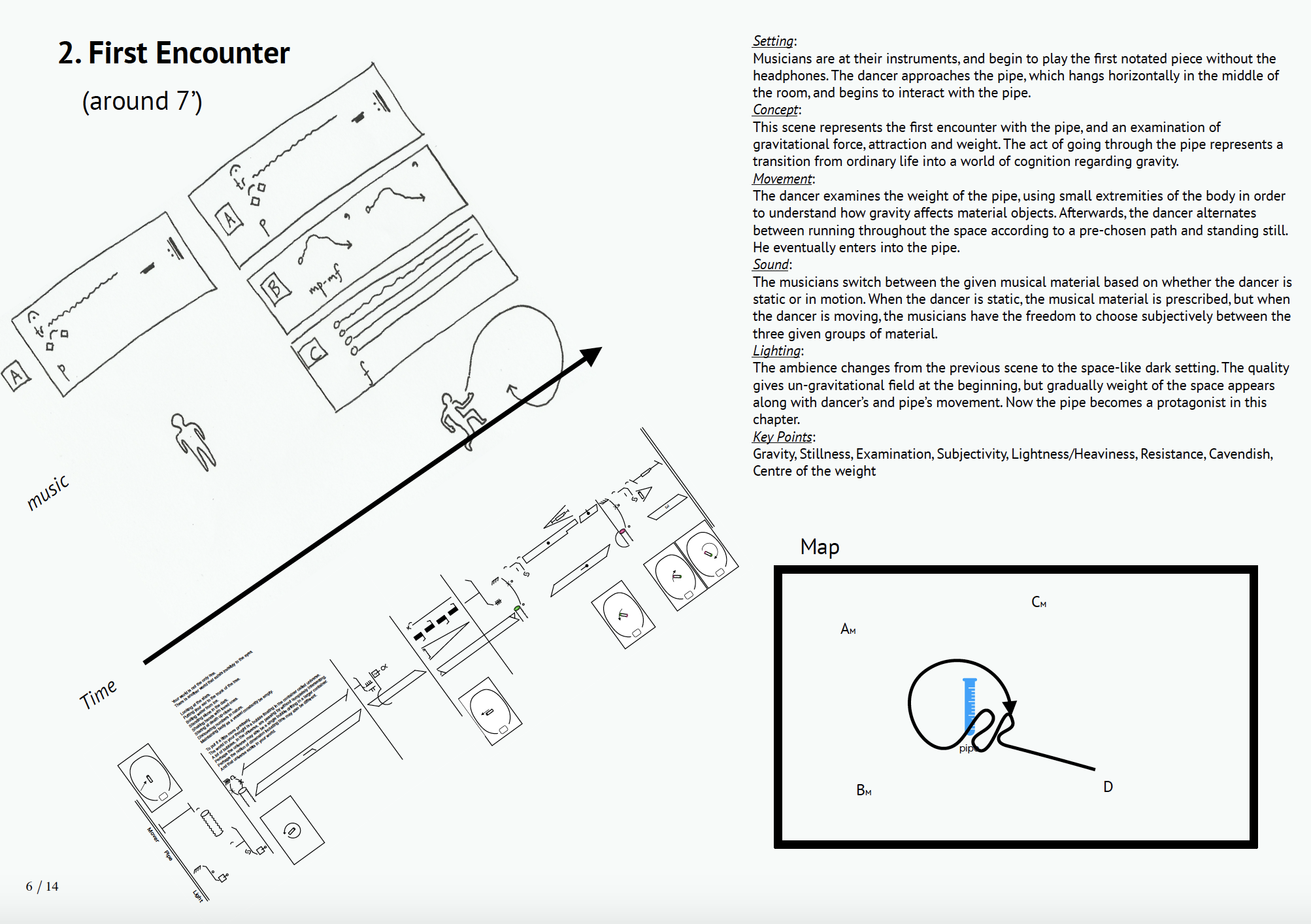
Nitsan
It also seems that so much of the archive which we speak of was undocumented by video. And what is documented? Perhaps some of the storytelling and testimonies. And coming back to those testimonies, and capturing those through interviews, or through oral history, you are actually using a similar medium of referencing.
I am very curious, because I think that Butoh is a challenging aesthetic. There is something in Butoh about uncapturing. Can you speak about that? The 'beyond aesthetic', or the experience of Butoh which is transmitting something that is beyond capturing?
It also seems that so much of the archive which we speak of was undocumented by video. And what is documented? Perhaps some of the storytelling and testimonies. And coming back to those testimonies, and capturing those through interviews, or through oral history, you are actually using a similar medium of referencing.
I am very curious, because I think that Butoh is a challenging aesthetic. There is something in Butoh about uncapturing. Can you speak about that? The 'beyond aesthetic', or the experience of Butoh which is transmitting something that is beyond capturing?
… on the web, you play a video and it shows a documented project <...> It means that time that I need, I require to imagine, it's gone.
… many Butoh dancers speak about coexistence with other (kinds of) creatures. Many Butoh dancers think or consider how, as human beings, we can coexist with others...
Furu
I think that many Butoh dancers speak about coexistence with other (kinds of) creatures. Many Butoh dancers think or consider how, as human beings, we can coexist with others animals, insects, butterflies, dragonflies, trees, flowers and even stones. Inanimate matters. And then, Butoh dancers (in terms of physicality and aesthetically) have bent arms, and folded knees, or something relatively low, and grounded shape, like animals. One of the representative forms of Butoh is lying on the back, on the floor, and creating sometimes weird movement with grotesque facial expressions, sometimes with tears and saliva. I think that Butoh dancers try to transcend, or try to go beyond who we are as human beings, and to express supernatural stuff, to relate it with all the current problems.
I think that many Butoh dancers speak about coexistence with other (kinds of) creatures. Many Butoh dancers think or consider how, as human beings, we can coexist with others animals, insects, butterflies, dragonflies, trees, flowers and even stones. Inanimate matters. And then, Butoh dancers (in terms of physicality and aesthetically) have bent arms, and folded knees, or something relatively low, and grounded shape, like animals. One of the representative forms of Butoh is lying on the back, on the floor, and creating sometimes weird movement with grotesque facial expressions, sometimes with tears and saliva. I think that Butoh dancers try to transcend, or try to go beyond who we are as human beings, and to express supernatural stuff, to relate it with all the current problems.
It actually feels very connected to the next question for me, because of what you just described, and how you relate yourself to existing tradition and practices. It considers Buthoh in the margins that we are talking about. Am I right that it could be the reason why it is there now? In Russia, there's a lot of developed Butoh movement, and whatever country I go to, it's very popular, and everybody knows what it is. How do you feel here in Germany, is it recognized on the margins? Or otherwise? How does this dynamic go through time? And through these international scenes, how is it in Japan, for example, and how is it here?
Furu
In the context of the Japanese environment, even though Butoh is originally from Japan, Japanese people don't know what Butoh is. For example, my partner, who is Japanese, didn't know what Butoh was before we met. So I think that Butoh is very much on the side, as it has a weird shape and outward appearance. Also some people feel that it is challenging the standards and norms on beauty. So that's why maybe still in Japan- Butoh is in a marginal area. But compared to Japan, here, Germany has
some kind of open culture or environment, because I think that in Germany and Europe, there is a totally different sense in relation to time in comparison with Eastern Asian people and culture.
There is a word of Haiku, and it says 'the months and days are travelers of eternity'. It means that time goes and is not accumulated, and in contrast, in Europe, in the West, it seems that time carries a concept of accumulation. Sometimes you can look back at history and reflect on what is going on in the past, but opposite to that in Japan, the time is just gone. That's why Butoh is in a marginal area, because it is stretching time.
There is a word of Haiku, and it says 'the months and days are travelers of eternity'. It means that time goes and is not accumulated, and in contrast, in Europe, in the West, it seems that time carries a concept of accumulation. Sometimes you can look back at history and reflect on what is going on in the past, but opposite to that in Japan, the time is just gone. That's why Butoh is in a marginal area, because it is stretching time.
even though Butoh is originally from Japan, Japanese people don't know what Butoh is. For example, my partner, who is Japanese, didn't know what Butoh was before we met.
Could you talk about the relation to the history of the art of Butoh, and how it's being transmitted and transformed through generations and through communities? Perhaps there were times that there was more visibility on German stages for Butoh than now? Or is there any visibility that I don't know about in recent years?
Furu
I was thinking about the transformation through generations and the civil communities. There, I am reminded that when I went to Cuba, 15 years ago, I collaborated with a Deaf Theatre in Cuba and we exchanged some ideas about the differences and some similarities between dance and theater, and we talked about passion and mutual interest in language and movement. And I thought at the time, I think that it is fostered by the long history and the cultural context that was cultivated by nature and environment and then I think it will come to us in the form of memories and visible forms like theater and dance and many people have said this. But for me, it was Tetsuro Watsuji. He is a philosopher, and the person who made me realize that nature and the climate shape human culture. It's easy to understand with the example of food for me. How ingredients are cooked through the environment of regional climate and culture, and how certain cuisine evolved, and since there is no firm definition of Butoh – it is interpreted differently and expressed in different ways by people living in different regions, and cultural backgrounds. Everyone's different, so the only thing we have in common is that we are all thinking beings, thinking people. At this point, I am reminded of a Butoh dancer called the Maro Akaji, and he is a founder of a big Butoh group in Tokyo called the Dairakudakan. He says "The great gift is to be born into this world." and also said that one person, has a
unique own party, so everybody's different, everybody's unique. It means that the person is born alone and dies alone and the greatest happiness comes from being born alone. At this point, I think that we don't need to stick around the concept of Butoh, because no matter what is art and what is life, we are (just) animals. I think that this idea is a little bit far from the Butoh concept, but still enduring in the concept of Butoh. I think this is kind of not easy, but a nice starting point to understand each other and exchange ideas about the uniqueness of each different body, each different religion, and each belief, no matter where you go. Then, my answer to- How to transmit through generation and location is, if you think about the fact that we are human beings, what we have in common is just the thinking by head and brain. Then, I think that we will have more empathy towards each other.
I think that we don't need to stick around the concept of Butoh, because no matter what is art and what is life, we are (just) animals.
Nitsan
Perhaps in society, or in mainstream culture, Butoh would be looked at as a technique, because it's strange, it's unfamiliar. You don't have something that you look at which you fully get. It's not a happy form. It's not very entertaining. If we would position ourselves outside of ourselves, which is impossible, but let's say we do it, we look at Butoh from the outside, and we think of it as the bad technique or the bad history. Is there any desire for Butoh to be desirable? If I would now talk to Butoh, which is impossible, but does Butoh want to be on the mainstage? Does Butoh want to be recognized as the good guy? I'm curious...

Furu
I don't think so. I think Butoh is an act of an outsider or of the bad guy, and it tries to always destroy some social norms, like breaking the current standard beauty.
Sasha
Once in Israel, I met a woman who told me that she's a producer of the dance theater, and she showed me an extract of a piece. It was obviously Butoh, but it was a huge company with a very fancy decoration. At first I was impressed that Butoh could exist on this scale, but at the same point, it's kind of a controversial idea. How do you feel about that? Am I wrong with this idea of “controversial”?
Furu
No, it's not wrong. The point is Butoh doesn't have any formed definition. If some people say that,” Oh, I'm a Butoh dancer, and my piece is a Butoh piece,” I totally accept it. Because Butoh is kind of open, and many Butoh dancers are talking just about the supernatural stuff, beyond the human kind realm. I think it's fine that Butoh takes place at times on fancy stages. I'm very curious to see what kind of expression Butoh pieces carry on such prestigious stage(s).
Nitsan
I always wonder why would anyone want to make something that they would call Butoh, because it's hard to survive financially through this hard form. I have another following question. Butoh was created, as far as I understand, in a time of crisis, of war or disaster. One can say that we are in a same kind of time. So, how does Butoh function right now? Is there a new kind of Butoh that is created during COVID time? I don't know, is there going to be a 'Cutoh'?
Butoh was founded by Hijikata Tatsumi just after World War Two,, and his first Butoh piece was presented in 1959, I think. And the piece was called “KinjikiKing Kinjik”, and based on a famous book in Japan, also by a Japanese author. Regarding COVID? Yes, definitely. I think because COVID is definitely an invisible matter. I think that art pieces always deal with the invisible value, invisible matter, in this sense COVID doesn't see the value we can see that still exists in front of us. How to deal with this invisible matter is your imagination and your experience that happened in the past, and the past is established by your knowledge and skills. Maybe the virus is fighting like the idea of invisible matter. It's the same as fighting or dealing with invisible matter, such as a body. I think in this context, dance, not only Butoh, should change.
...art pieces always deal with the invisible value, invisible matter, in this sense COVID doesn't see the value we can see...
Sasha
I was wondering the same, because from what you told, it also felt to me that Butoh is like an ideal practice to do through tremor and uncertainty.
Furu
We are looking for some solution, direct solution, against the trauma and uncertainty. And using the internet, I think it seems like our internet has a lot of information, and sometimes answers, direct answers, but actually, the internet doesn't answer you directly, because the internet is just a tool, just a kit, a gadget. The internet is an interesting infrastructure for us to have some efficient and effective answers and solutions But we have a body, and we cannot imagine much in the internet, so I think that body as infrastructure has some solutions and answers which are more effective than the internet.
Nitsan
Most dance techniques are based around a very specific technique, and a very specific aesthetic, and I think that Butoh is very much in the body. It's such an embodied dance form or dance technique, that the experience of one being in a 'state' or in their experience, could be frightening for audiences or for cultures. So, I wonder if there is globally something about a fear of Butoh, because of the fear of the body. Because why are we going to the internet, into different instruments, in order to run away from the unknown, whereas Butoh kind of confronts us with that? I wonder what you think about that in this current moment? Because people are afraid of COVID exactly because of those things we speak of. When I went to a Butoh session, I was confronted with myself in a way I was not when I did Graham, or ballet.
Furu
As I said, Butoh doesn't have any formal definition. It means that you should rely only on the physical sense, and we are talking about this hyper information, so how do we deal with this fear of the information? It is not an enemy, but a matter for the body and it is very limited. Of course, there is some possibility to expand, but there are certain limitations, so you cannot bear the whole of the information. I think sometimes one should go away from monitor in order to revive and refresh the body, then, maybe you can realize that there's a lot of information in nature, and that we don't know what's going on inside of the tree and the inside of the flower, so maybe, you can touch it. So perhaps the internet is not untouchable, and the information is also (not?) untouchable. So this is kind of the question for us, who have a more corporeal sense. If we have more cutting edge modern technology, with haptic things and a hologram that you can touch, maybe your fear, the curiosity and fear fulfill somehow.
Furu
As I said, Butoh doesn't have any formal definition. It means that you should rely only on the physical sense, and we are talking about this hyper information, so how do we deal with this fear of the information? It is not an enemy, but a matter for the body and it is very limited. Of course, there is some possibility to expand, but there are certain limitations, so you cannot bear the whole of the information. I think sometimes one should go away from monitor in order to revive and refresh the body, then, maybe you can realize that there's a lot of information in nature, and that we don't know what's going on inside of the tree and the inside of the flower, so maybe, you can touch it. So perhaps the internet is not untouchable, and the information is also (not?) untouchable. So this is kind of the question for us, who have a more corporeal sense. If we have more cutting edge modern technology, with haptic things and a hologram that you can touch, maybe your fear, the curiosity and fear fulfill somehow.
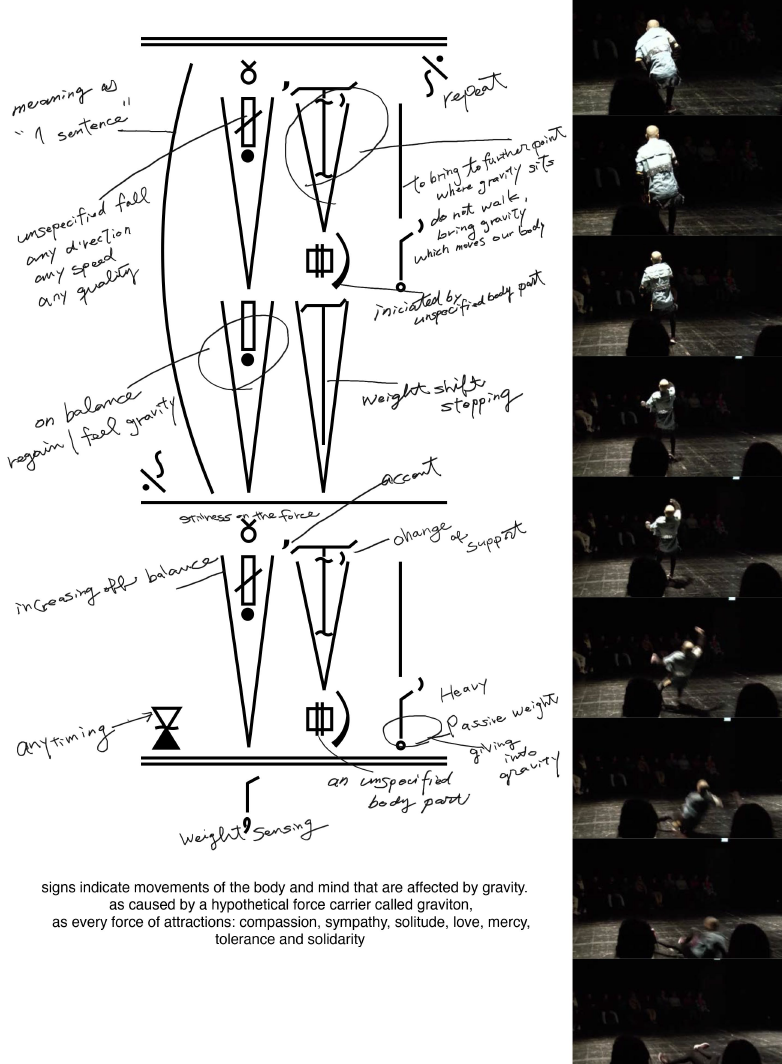
Nitsan
I'm still thinking about this idea that Butoh is so smart that it managed to be uncaptured by mainstream (society). What did Butoh do that it managed to stay in the margins, and not get uncaptured or even undesired, because most transforms that have existed in the last of century have been capitalized, transformed and taken. I can think of Voguing, Latin American dances, so many dance forms have been taken and moved out of context, and somehow Butoh really managed to escape that.
Furu
I think it's because of the shorter history of Butoh. It got the founded officially in 1959.
Nitsan
If you look to the future, do you think it's going to be captured?
Furu
I don't know, maybe, yes. Even things that don't look like Butoh, they call themselves Butoh. I think this is because the word Butoh captures some attraction, and maybe money. So if this current trend continues further in the future, I think that Butoh could be captured.
Sasha
In the beginning, you spoke about your research in notation and your own practice of Butoh, and that also the history became your point of research. So, in relation to the question of your own avoidance of capitalization of Butoh as a dance direction, would you be willing to find out the way to invent any kind of notation that would allow people to stay and expand the imagination? To stay creative and to transmit this idea of Butoh, but not speculate, on a form and on a label? Do these conceptions of notation and Butoh, meet somewhere in your mind, or practice?
If you look to the future, do you think it's going to be captured?
Furu
I don't know, maybe, yes. Even things that don't look like Butoh, they call themselves Butoh. I think this is because the word Butoh captures some attraction, and maybe money. So if this current trend continues further in the future, I think that Butoh could be captured.
Sasha
In the beginning, you spoke about your research in notation and your own practice of Butoh, and that also the history became your point of research. So, in relation to the question of your own avoidance of capitalization of Butoh as a dance direction, would you be willing to find out the way to invent any kind of notation that would allow people to stay and expand the imagination? To stay creative and to transmit this idea of Butoh, but not speculate, on a form and on a label? Do these conceptions of notation and Butoh, meet somewhere in your mind, or practice?
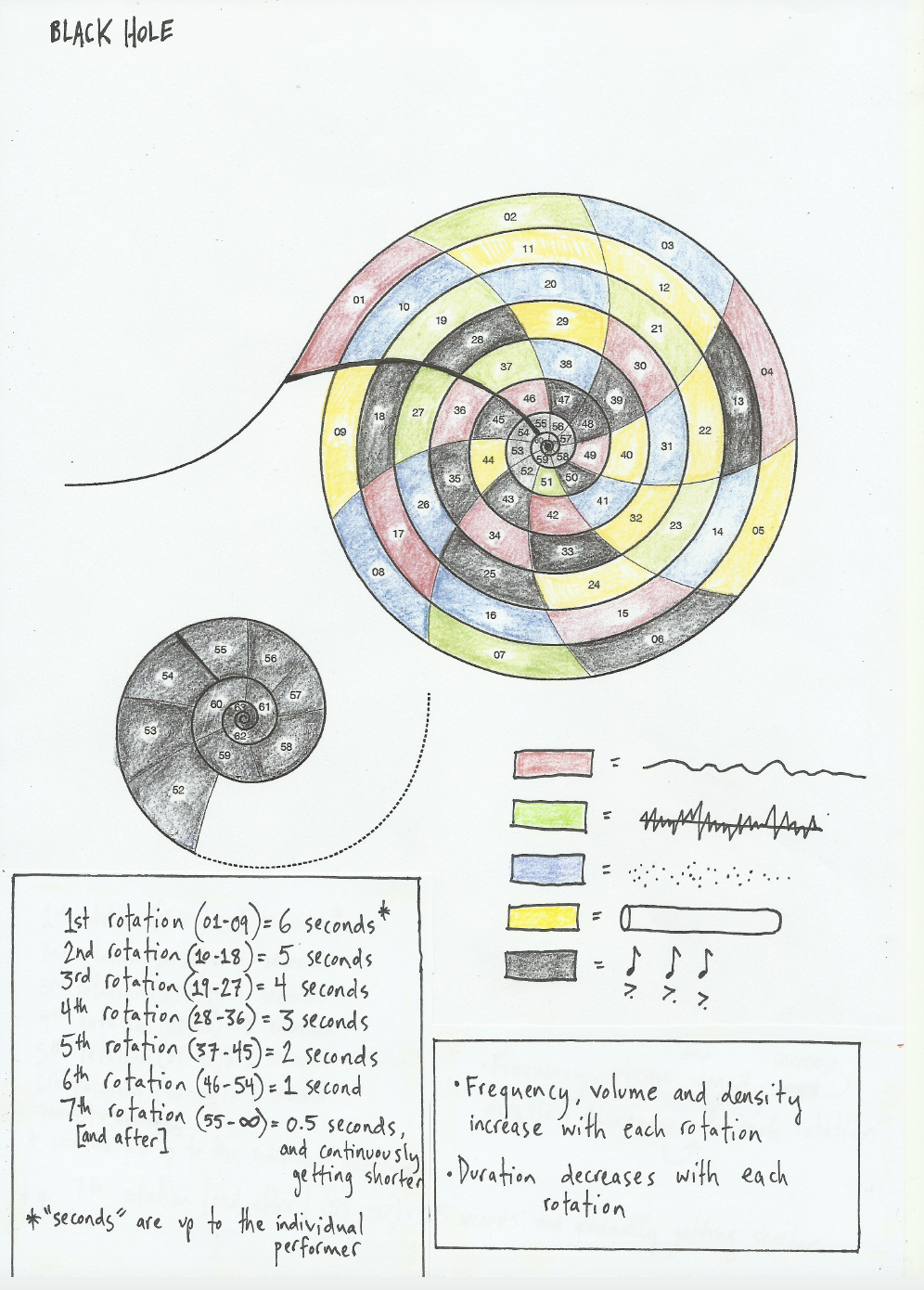
It is messy, and very difficult to figure out. This creates some mystery, and undefined document. So this is going be part of an uncapturable part of Butoh
Furu
I researched notation two years ago, and at that time, I found Labanotation, and Beauchamp-Feuillet notation, which is described by an illustration, and Labanotation uses also icons. But Butoh has a notation, which was made by Hijikata. He used letters in Japanese, and he also used some pictures by a painter, a British painter. His sketchbook, which is a notation, had a lot of letters and descriptions, also pictures of drawings, even photos. It is messy, and very difficult to figure out. This creates some mystery, and undefined document. So this is going be part of an uncapturable part of Butoh, I think.
I researched notation two years ago, and at that time, I found Labanotation, and Beauchamp-Feuillet notation, which is described by an illustration, and Labanotation uses also icons. But Butoh has a notation, which was made by Hijikata. He used letters in Japanese, and he also used some pictures by a painter, a British painter. His sketchbook, which is a notation, had a lot of letters and descriptions, also pictures of drawings, even photos. It is messy, and very difficult to figure out. This creates some mystery, and undefined document. So this is going be part of an uncapturable part of Butoh, I think.
I think also think that documenting and archiving is a very important task for us, who live here in current times. In Japan, there is not archiving awareness. Of course, there are traditional pieces from the middle age and from the 15th century there's a lot, but there is no modern- contemporary archive. Now, you are contributing to the process to create an archive, and you are contributing to the process of creating awareness to our fellow dancers who live in this current unstable time. I think this will be a base of an active area. I think that your intention is very precious for us.
Nitsan
I think you're doing the same thing, because you're interviewing fellow artists, and their voices are so important to be heard. And we want to thank you for doing the work, because we are basically doing the same work that you are doing. We're doing it with others. So we are doing it in kind of a rhizomatic extension of each other.
Nitsan
I think you're doing the same thing, because you're interviewing fellow artists, and their voices are so important to be heard. And we want to thank you for doing the work, because we are basically doing the same work that you are doing. We're doing it with others. So we are doing it in kind of a rhizomatic extension of each other.

we don't need to stick around the concept of Butoh,
because no matter what is art and what is life,
we are (just) animals.
Moving Margins Chapter II
moving arti|facts from the margins of dance archives
into accessible scores and formats

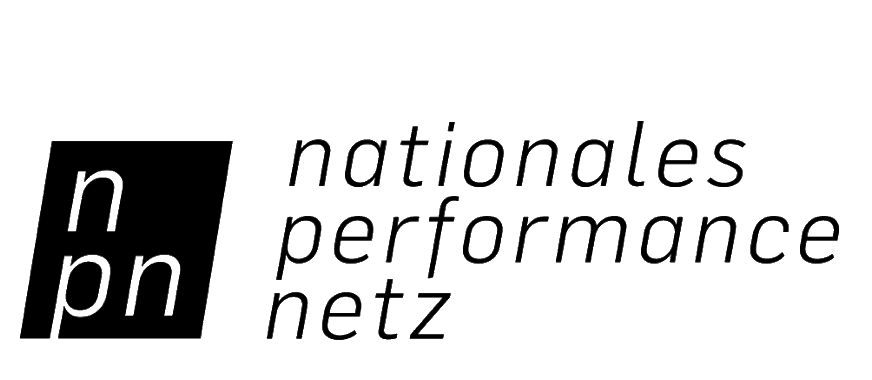

Supported by the NATIONAL PERFORMANCE NETWORK
- STEPPING OUT, funded by the Federal Government
Commissioner for Culture and Media within the
framework of the initiative NEUSTART KULTUR.
Assistance Program for Dance.
artistic researches
Supported by the NATIONAL PERFORMANCE NETWORK
- STEPPING OUT, funded by the Federal Government
Commissioner for Culture and Media within the
framework of the initiative NEUSTART KULTUR.
Assistance Program for Dance.
© 2021 All rights reserved to Sasha Portyannikova, Nitsan Margaliot and the interviewees.

